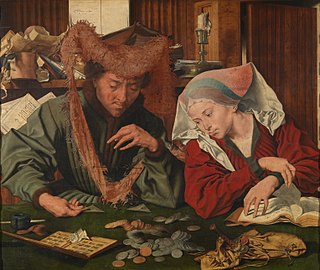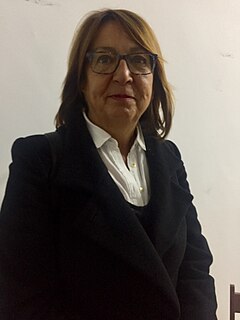Gallery
- Prado Museum
- Reina Sofía Museum
- Thyssen-Bornemisza Museum
The Golden Triangle of Art is made up of three important art museums located close to one another on the Paseo del Prado, in the centre of Madrid, Spain. It also houses the CaixaForum museum which will be the headquarters of the National Centre for the Visual Arts in the Old Tobacco Factory. [1] . In 2021 the area was included in the UNESCO World Heritage list.
The three art museums are:

Tourism in Spain is a major contributor to national economic life, contributing to about 11.8% of Spain's GDP. Ever since the 1960s and 1970s, the country has been a popular destination for summer holidays, especially with large numbers of tourists from the United Kingdom, Ireland, France, Germany, Italy, the Benelux, and the United States, among others. Accordingly, Spain's foreign tourist industry has grown into the second-biggest in the world.

The Prado Museum, officially known as Museo Nacional del Prado, is the main Spanish national art museum, located in central Madrid. It is widely considered to house one of the world's finest collections of European art, dating from the 12th century to the early 20th century, based on the former Spanish Royal Collection, and the single best collection of Spanish art. Founded as a museum of paintings and sculpture in 1819, it also contains important collections of other types of works. The Prado Museum is one of the most visited sites in the world, and is considered one of the greatest art museums in the world. The numerous works by Francisco Goya, the single most extensively represented artist, as well as by Hieronymus Bosch, El Greco, Peter Paul Rubens, Titian, and Diego Velázquez, are some of the highlights of the collection. Velázquez and his keen eye and sensibility were also responsible for bringing much of the museum's fine collection of Italian masters to Spain, now the largest outside Italy.

The Museo Nacional Centro de Arte Reina Sofía is Spain's national museum of 20th-century art. The museum was officially inaugurated on September 10, 1990, and is named for Queen Sofía. It is located in Madrid, near the Atocha train and metro stations, at the southern end of the so-called Golden Triangle of Art.

Francesco del Cossa was an Italian Renaissance painter of the School of Ferrara, who after 1470 worked in Bologna. Cossa is best known for his frescoes, especially his collaboration with Cosimo Tura on a cycle of the months in the Palazzo Schifanoia of the Este family, rulers of Ferrara. Otherwise, his paintings are mostly of religious subjects, with some portraits and drawings attributed to him. He also designed stained glass.

The Paseo del Prado is one of the main boulevards in Madrid, Spain. It runs north–south between the Plaza de Cibeles and the Plaza del Emperador Carlos V, with the Plaza de Cánovas del Castillo lying approximately in the middle. The Paseo del Prado forms the southern end of the city's central axis. It enjoys the status of Bien de Interés Cultural (BIC), and as part of a combined UNESCO World Heritage Site with Buen Retiro Park.

The Thyssen-Bornemisza National Museum, or simply the Thyssen, is an art museum in Madrid, Spain, located near the Prado Museum on one of the city's main boulevards. It is known as part of the "Golden Triangle of Art", which also includes the Prado and the Reina Sofia national galleries. The Thyssen-Bornemisza fills the historical gaps in its counterparts' collections: in the Prado's case this includes Italian primitives and works from the English, Dutch and German schools, while in the case of the Reina Sofia it concerns Impressionists, Expressionists, and European and American paintings from the 20th century.

Jan Provoost, or Jean Provost, or Jan Provost was a Belgian painter born in Mons.

Marinus van Reymerswaele or Marinus van Reymerswale was a Dutch Renaissance painter mainly known for his genre scenes and religious compositions. After studying in Leuven and training and working as an artist in Antwerp, he returned later to work in his native Northern Netherlands. He operated a large workshop which produced many versions of mainly four themes: the tax collectors, the money changer and his wife, the calling of Saint Matthew and St. Jerome in his study.

Robert Salmon was a maritime artist, active in both England and America. Salmon completed nearly 1,000 paintings, all save one of maritime scenes or seascapes. He is widely considered the Father of American Luminism.

Hans Maler zu Schwaz (1480/1488–1526/1529) was a German painter born in Ulm and active as portraitist in the village of Schwaz, near Innsbruck. Maler may have trained with the German artist Bartholomäus Zeitblom, who was chief master of the School of Ulm between 1484 and 1517. He painted numerous portraits of members of the Habsburg court at Innsbruck as well as of wealthy merchants such as the Fuggers.

PHotoEspaña, the International Festival of Photography and Visual Arts of Madrid, is a photography forum that began in 1998. The Festival’s program presents work by Spanish and international image-makers. It runs an awards programme with several categories.

The Casón del Buen Retiro is an annex of the Museo del Prado complex in Madrid. Following major restoration work, which was completed in October 2007, it now houses the Museum's study centre and library.

Plaza del Emperador Carlos V is a square in the city of Madrid. It is named after Charles V, Holy Roman Emperor, who also reigned in Spain as Charles I. However, it is referred to as Plaza de Atocha, because it is where Madrid Atocha railway station is located.
The Museum of Modern Art was the Spanish national museum dedicated to 19th- and 20th-century painting. It was set up in 1894. It closed in 1971, when its 19th-century collections were merged into those of the Museo del Prado, but housed at the Casón del Buen Retiro, and its 20th-century collections formed into the Spanish Museum of Contemporary Art, the predecessor of the present-day Museo Nacional Centro de Arte Reina Sofía.

Carlos Sebastián Pedro Hubert de Haes was a Spanish painter from Belgium. He was noted for the Realism in his landscapes, and was considered to be the "first contemporary Spanish artist able to capture something of a particularly Spanish 'essence' in his work". He was cited along with Jenaro Perez Villaamil and Aureliano de Beruete as one of the three Spanish grand masters of landscape painting, the latter of which was his pupil.

Estación del Arte is a station on Line 1 of the Madrid Metro and is located in Fare Zone A. It was opened to the public on 26 December 1926. The station is located beneath Charles V plaza, less than 500 meters from the Madrid Atocha railway station which serves commuter and long-distance trains. It is the nearest Metro station to the Paseo del Prado. It is located between the neighborhoods of Embajadores (Centro), Jerónimos (Retiro) and Atocha (Arganzuela).

Patricia "Patty" Phelps de Cisneros is a Venezuelan art collector and philanthropist who focuses on Latin American modernist and contemporary art from Brazil, Venezuela, and the Río de la Plata region of Argentina and Uruguay. Since the 1970s Cisneros has supported education and the arts, with a particular focus on Latin America. Along with her husband, Gustavo A. Cisneros, she founded the New York City and Caracas-based Fundación Cisneros. In the 1990s the Fundación's primary art-related program became the Colección Patricia Phelps de Cisneros. In 2016, Cisneros donated 102 modern and contemporary artworks from the 1940s to 1990s to the Museum of Modern Art, establishing the Patricia Phelps de Cisneros Research Institute for the Study of Art from Latin America at MoMA.

Rocio de la Villa is a Spanish university professor, art historian, curator, researcher and art critic. She has edited and collaborated in the edition of distinct catalogues and publications related with the art and the position of the woman in the artistic world. In 2014 she was rewarded with the Prize MAV in the modality of Criticism of art. She also goes by the names Rocio de la Villa Ardura and Rocio Villa-Ardura.
Coordinates: 40°24′32″N3°41′40″W / 40.4087777778°N 3.6945°W